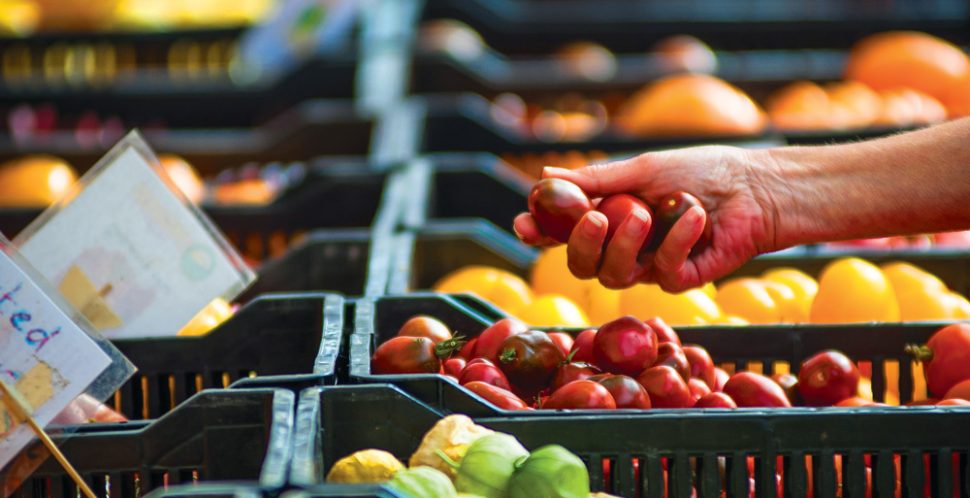
This is Part 2 to the topic, how much & what should I eat? If you missed the first half of this oh-so-popular health topic, see the previous post!
In Part 1, nutrition basics like food groups and differences between processed and minimally processed foods were covered. Hopefully this helped you make healthy choices at a lunch café and whilst at home. Part 2 is all about serves vs portions. This is an important concept to grasp to answer the “how much should I eat?” question.
Start Here:
| Grains | Protein | Dairy | Veg | Fruit | |
| Males
(19 to 50 years old) |
6 | 3 | 2 ½ to 3 | 6 | 2 |
| Females
(19 to 50 years old) |
5 | 2 to 2 ½ | 2 ½ to 3 ½ | 5 | 2 |
These are the number of ‘serves’ of each food group to aim for each day. These serves are pulled from the Australian Dietary Guidelines for males and females ages 19-50.
| Grains | Protein | Dairy | Veg | Fruit | |
| Males
(51 to 70 years old) |
6 | 2 ½ | 2 ½ | 5 ½ | 2 |
| Females
(51 to 70 years old) |
4 | 2 | 4 | 5 | 2 |
These are the number ‘serves’ of each food group to aim for each day. These serves have been pulled from the Australian Dietary Guidelines for males and females ages 51 to 70.
Note that additional serves may be required if you are taller or more active. This is because you’ll have greater energy needs (require more kilojoules or calories per day) in order to maintain your weight. If you are wondering if you are eating enough for you personally, this is a great question to ask a dietitian. To find a local dietitian visit the Dietitians Association of Australia’s (DAA) website.
What about fats/oils/spreads?
The recommended ‘serves’ of fats/oils/spreads are not as specific as the core food groups. But replacing or limiting intake of the less healthy fats (saturated fats): butter, shortening, animal fat, cream, coconut oil, palm oil and the foods high in these fats like: pastries, pies, processed meats, burgers, potato chips, crisps, sausages, cakes, biscuits etc. is ideal for health and weight management.
Foods high in healthy (unsaturated) fats include seeds, nuts, avocados, fish, grass-fed meat, poultry, eggs, oats, and beans. Oils high in these healthy fats include sunflower, safflower, soybean, sesame seed, grape seed, canola, rice bran, and olive. A good rule of thumb is a “thumb size” portion of these oils is a serve. Though these foods and oils are high in healthy fats, they are also high in kilojoules and calories. So keeping their servings smaller means you’ll have more kilojoules and calories to eat elsewhere in your day. Don’t use up your whole days’ worth of kj/calories on fats!

Okay great! But, what does a ‘serve’ actually look like?”
Serve vs Portion. Know the Difference. A ‘serve’ is a set amount of food defined by the Australian Dietary Guidelines. Standard from person to person. For example: 1 serve of grain = 1 slice of bread. Whereas a ‘portion’ is how much you serve yourself. It can vary from person to person depending on how much you fill your plate or bowl! For example: how much spaghetti Bolognese you plate up for yourself may look different to how much your partner gives themselves. And this amount will equate to X amount of grain ‘serves’ depending on your portion. #goodtoknow.
Putting it all Together. If you have been wondering if you are eating the right amount & the right types of foods for you, comparing a day’s intake to the chart above is a great exercise to see how you are stacking up. This is called a 24-hour recall. Write down all the food and drinks you have consumed in the last 24 hours and tally up your serves. Striving to eat according to these guidelines is an absolutely great place to start for your health and your weight!
References:
1.Eat for Health. Australian Dietary Guidelines Summary. https://eatforhealth.govcms.gov.au/sites/default/files/content/The%20Guidelines/n55a_australian_dietary_guidelines_summary_131014_1.pdf Accessed 20 March 2020.








